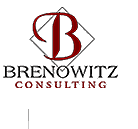


|
Issue # 4 - Summer Reading
by Randi Brenowitz Issue # 4 Brenowitz Consulting is pleased to bring you this issue of Tools for Teams, our bi-monthly electronic newsletter. Each issue will explore one of the central themes of today's challenging business environment. We will present our current thinking, relevant readings, book reviews, and other resources--all designed to give you practical tools to improve productivity through teamwork and collaboration Feel free to forward this newsletter to your friends and colleagues. To subscribe, send e-mail newsletter@brenowitzconsulting.com with "subscribe" in the subject line. To unsubscribe, email newsletter@brenowitzconsulting.com with “unsubscribe” in the subject line. You may quote anything herein, with the following attribution: “Reprinted from Tools for Teams, © Brenowitz Consulting (www.brenowitzconsulting.com).” We welcome your comments and suggestions for future topics. Just email us at info@brenowitzconsulting.com.
* * * * *
When I'm not busy reading books about teams and team development, you can usually find me reading a good murder mystery—the kind of stuff the Sunday Book Reviews refer to as "summer reading." Imagine my delight when I discovered The Value Effect (Berrett-Kholer, 2000)—a business book disguised as a murder mystery. Reading right at the beginning that it was the consultant who got killed during a break at an off-site meeting did temper my emotions a bit. In the course of the investigation, author John Guaspari manages to poke fun at Human Resources, Quality, Sales, Marketing, Operations, Engineering, and Finance while also giving credence to each organization's legitimate concerns (and cynicism) about corporate change efforts. The agenda of the off-site meeting is to create the corporation's strategic initiatives (dubbed "NBT—Next Big Thing" by the participants) for the coming year. The group had already been through Total Quality, Reengineering, Empowerment, and Customer Focus. This year it was going to be Creating Value Connections (CVC), and consultant Michael Fallon was working with the executive team to figure out a way for this initiative not to be the next NBT. His view (and mine) is that the tools of all the NBT's are wonderful and could be a big help to the corporation. It's just that nobody applies them because employees haven't been given the context in which to place them, so they lack the energy to apply and sustain them. Once employees have context and energy, Fallon predicts that the corporation will see the "value effect" and will gain a huge competitive advantage. Fallon proposes that the team work on making major changes to the organization in order to get all employees onboard with this new initiative. Each organization will be effected—which makes each VP a viable murder suspect. You can tell that Guaspari has been to a number of these off-sites as he has the police inspector wonder if this was "death by knickknack" after he sees the T-shirts, mugs, and letter openers imprinted with the new CVC logo. Further on in the investigation the Quality VP even refers to Fallon as a "six sigma performer." This was even more fun when I realized that Guaspari began his career as a Quality guy. The mystery is solved when everyone finally understands the true power of the Value Effect: it is nothing less than a surprisingly straightforward solution to a widespread and persistent problem. Guaspari shows that the Value Effect's full power is only unleashed when individuals realize that it is not a Next Big Thing after all. Rather, its power comes from its ability to provide a stable and enduring context to help people and their organizations better understand and deal with the customer and an ever-changing marketplace. The foundation of the Value Effect rests on 4 basic principles. 1.
Customers buy on value…and only on value
2. Value = GOT/COST
3. Everybody has a lifetime of experiences as a customer
4. Customer means customer Guaspari goes on to give some guideposts and tools for implementation of these 4 basic principles. You'll have to read the book for those—don't you just hate it when someone gives away the ending? * * * * * * * * * * Additional Resources on this Topic
What’s New at Brenowitz Consulting Randi's writing:
News In recognition of her professional achievements, Randi was recently awarded the status of Certified Management Consultant (CMC) by the Institute of Management Consultants. CMC status represents evidence of the highest standards of consulting and adherence to the ethical canons of the profession. Less than 1% of all consultants have achieved this level of performance. |
||||||||
|
||||||||